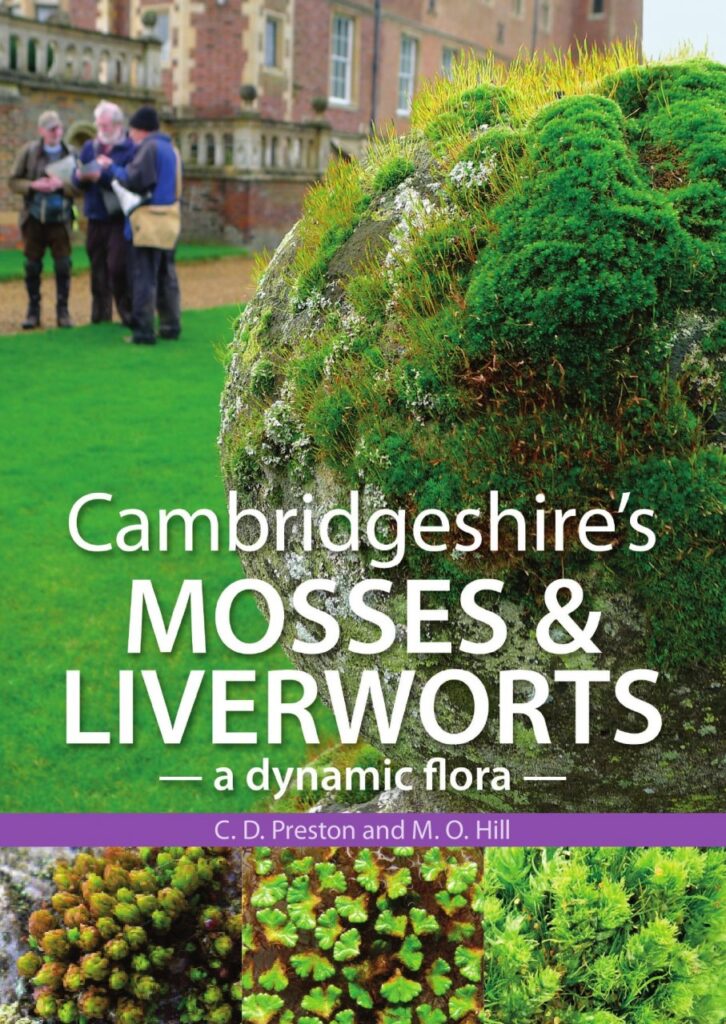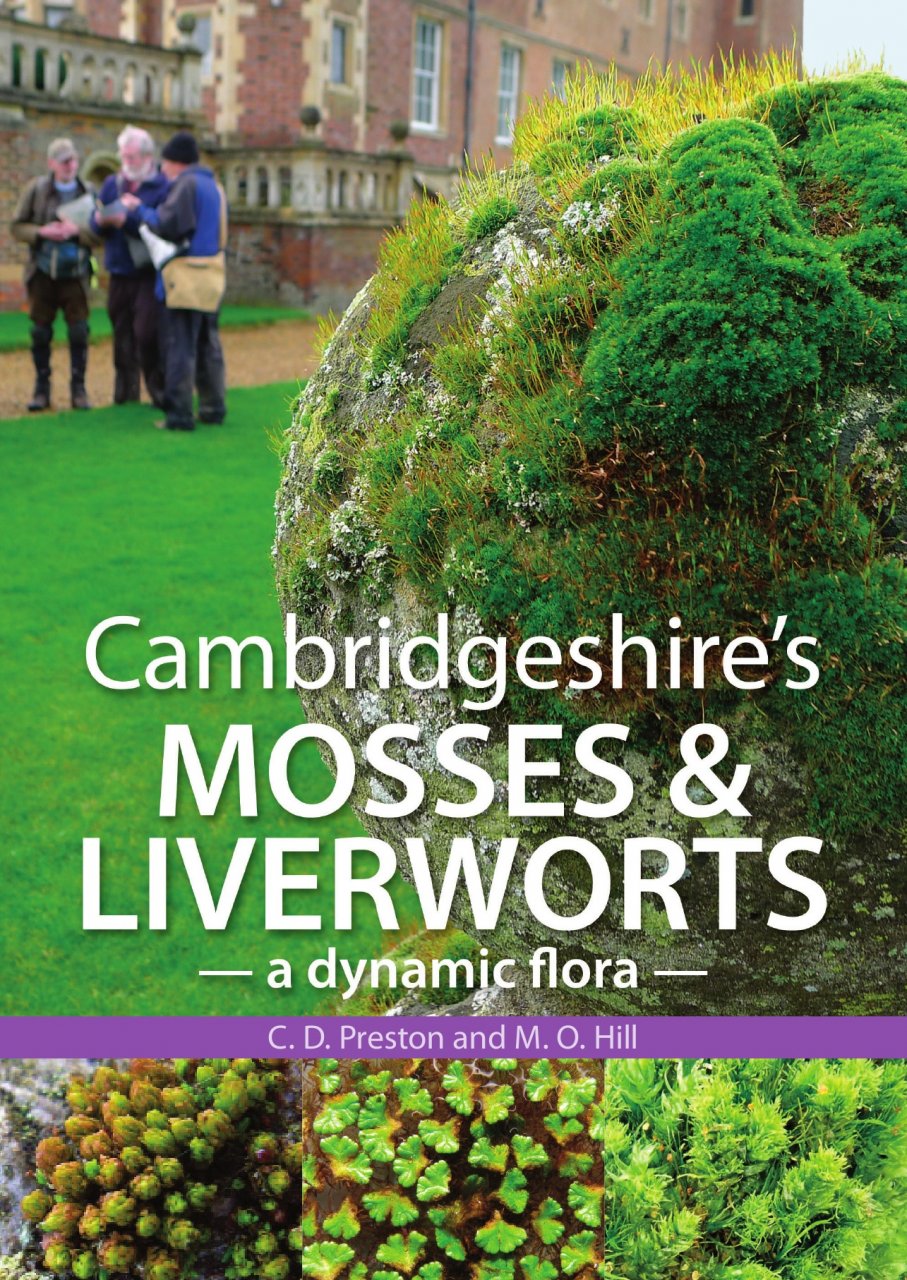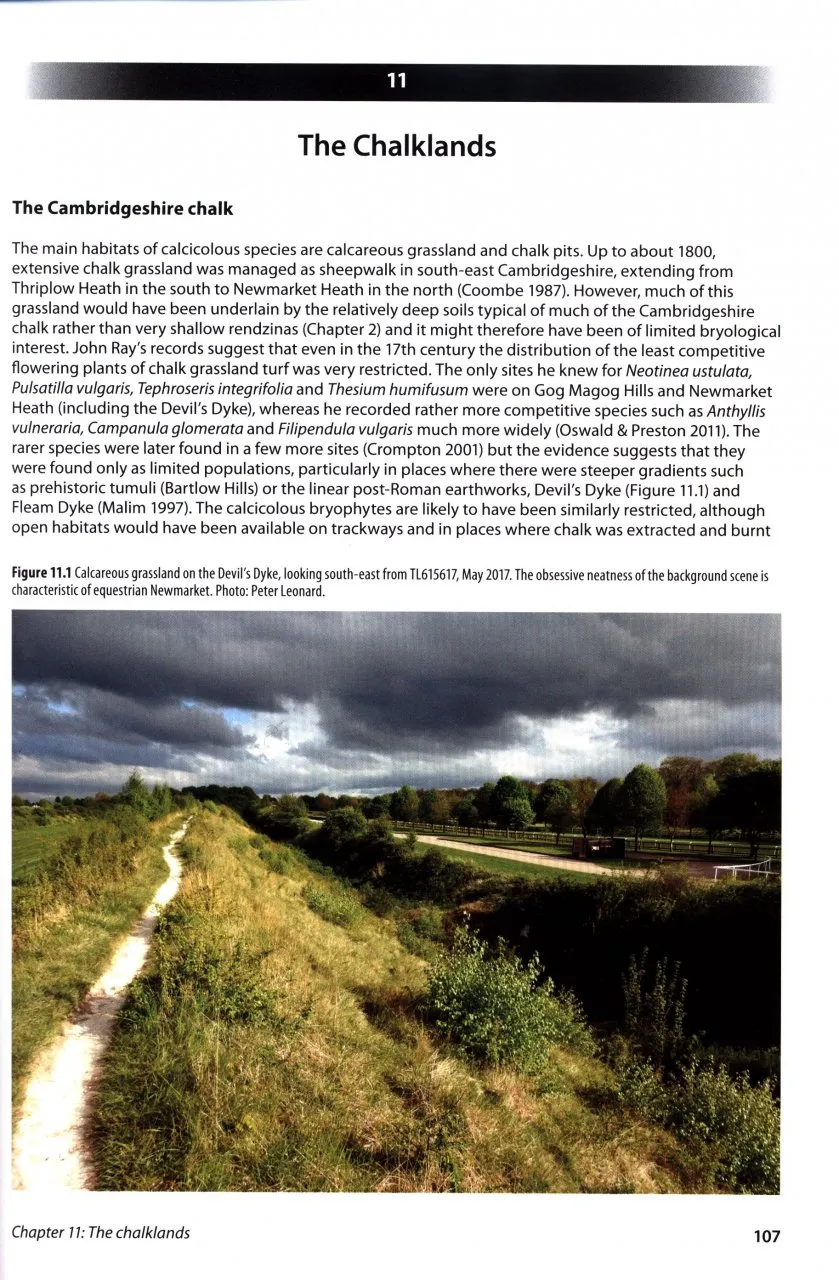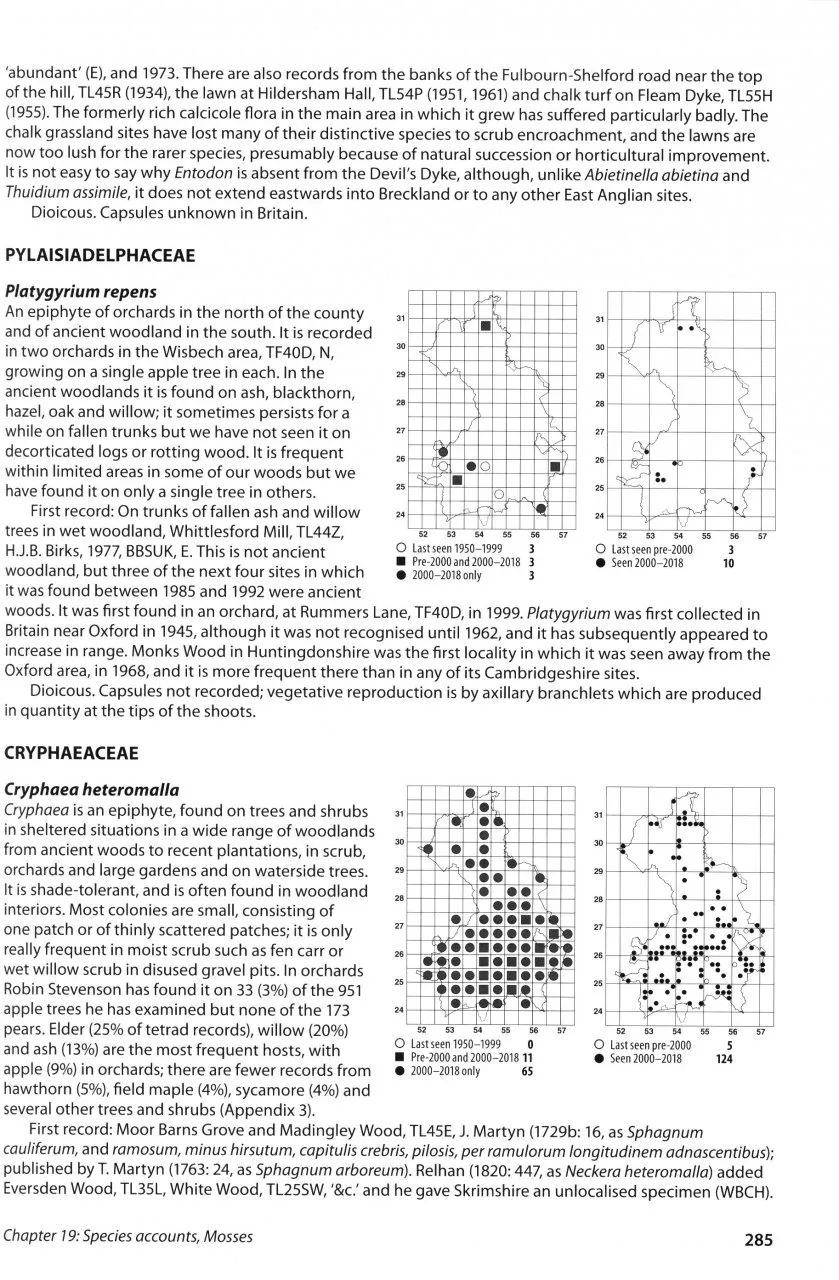‘Why would anyone write a bryophyte flora of Cambridgeshire?’ a friend asked recently. The question is not entirely without merit; the county, with its dry climate, soft landform and intensive agricultural practices, is not a place of obvious bryological appeal. Unlike most counties in Britain and Ireland, however, Cambridgeshire has a very long and distinguished history of bryological study, and it is the discussion of how and why its species and communities have changed over time that really sets this flora apart from its contemporaries.
At 326 pages, this is a substantial book. Early chapters covering Cambridgeshire’s climate, physical geography, and current and historical land use set context for what follows. A lengthy discourse on the history of local bryophyte-recording and key bryologists, from the great naturalist John Ray to the present day, also makes for fascinating reading. Later, we are introduced to local bryophyte habitats and assemblages. Obvious ones include woodland, chalk habitats and farmland, while more novel groupings include species of orchards, parks and gardens, and the built environment, and bryophytes growing as epiphytes.
View this book on the NHBS website
A total of 341 species has been recorded in Cambridgeshire and species accounts fill nearly half of the book. Each is presented in typical county-flora style and includes not one but two distribution maps, at quadrant (5km × 5km) and tetrad (2km × 2km) scale, to allow the inclusion of older records. Here we learn of unexpected treasures in Cambridgeshire. Who would have thought that Hedwigia stellata would turn up on a wooden seat in Cambridge? Or that Pterigynandrum filiforme and a suite of other rare mosses would colonise orchard trees?
While undertaking fieldwork for the flora between 2000 and 2018, the authors and other recorders observed what appeared to be significant changes in the county’s bryophyte flora since earlier times. To quantify the changes and to tease out finer elements, advanced analytical techniques were applied to the resultant dataset and historical records. Anyone who has read the current Atlas of British and Irish Bryophytes (written and edited by the same authors and others) will be familiar with the narrative and style.
Cambridgeshire’s Mosses and Liverworts: a dynamic flora is beautifully written and nicely illustrated. Some of the photographs capture a moment in time, such as the one on page 137, which shows two determined-looking bryologists in swimming attire in the New Bedford River in (successful) pursuit of Cinclidotus fontinaloides. We also see photographs of handwritten record sheets made by famous bryologists such as Paul Richards and Harold Whitehouse, an intriguing insight into recording techniques before technology changed everything.
A couple of small quibbles: the species accounts are a little text-heavy and would have benefited from more accompanying photographs and/or illustrations; and a statement of conservation status at county level for each species would also have been welcome.
Chris Preston and Mark Hill are both highly respected bryologists with a deep knowledge of Cambridgeshire, its habitats and its species. Their enthusiasm for their subject shines through in this flora, which deserves a place on the bookshelf of any serious student of mosses and liverworts, whether they live in Cambridgeshire or not.




